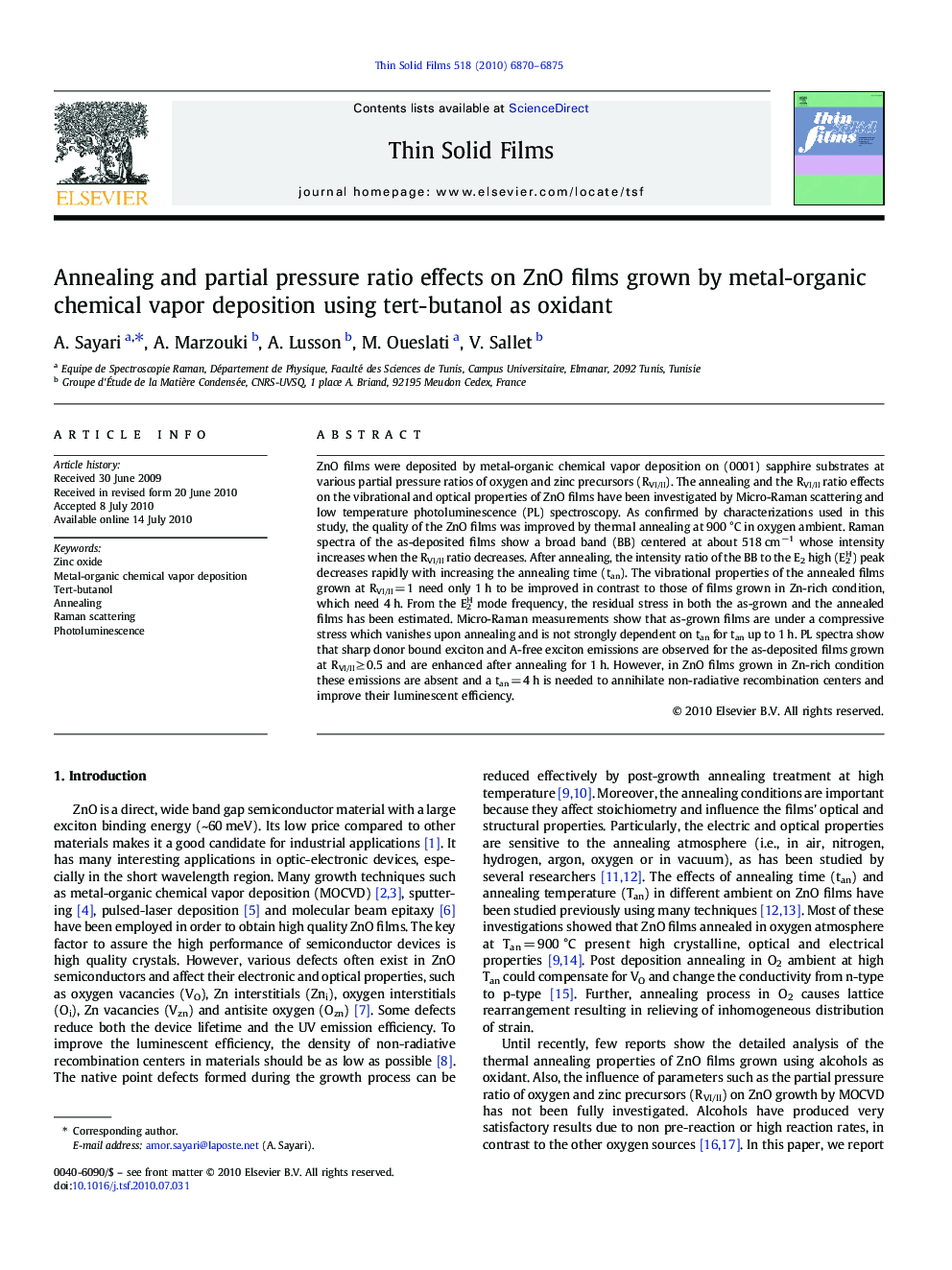| Article ID | Journal | Published Year | Pages | File Type |
|---|---|---|---|---|
| 1670362 | Thin Solid Films | 2010 | 6 Pages |
ZnO films were deposited by metal-organic chemical vapor deposition on (0001) sapphire substrates at various partial pressure ratios of oxygen and zinc precursors (RVI/II). The annealing and the RVI/II ratio effects on the vibrational and optical properties of ZnO films have been investigated by Micro-Raman scattering and low temperature photoluminescence (PL) spectroscopy. As confirmed by characterizations used in this study, the quality of the ZnO films was improved by thermal annealing at 900 °C in oxygen ambient. Raman spectra of the as-deposited films show a broad band (BB) centered at about 518 cm−1 whose intensity increases when the RVI/II ratio decreases. After annealing, the intensity ratio of the BB to the E2 high (E2H) peak decreases rapidly with increasing the annealing time (tan). The vibrational properties of the annealed films grown at RVI/II = 1 need only 1 h to be improved in contrast to those of films grown in Zn-rich condition, which need 4 h. From the E2H mode frequency, the residual stress in both the as-grown and the annealed films has been estimated. Micro-Raman measurements show that as-grown films are under a compressive stress which vanishes upon annealing and is not strongly dependent on tan for tan up to 1 h. PL spectra show that sharp donor bound exciton and A-free exciton emissions are observed for the as-deposited films grown at RVI/II ≥ 0.5 and are enhanced after annealing for 1 h. However, in ZnO films grown in Zn-rich condition these emissions are absent and a tan = 4 h is needed to annihilate non-radiative recombination centers and improve their luminescent efficiency.
